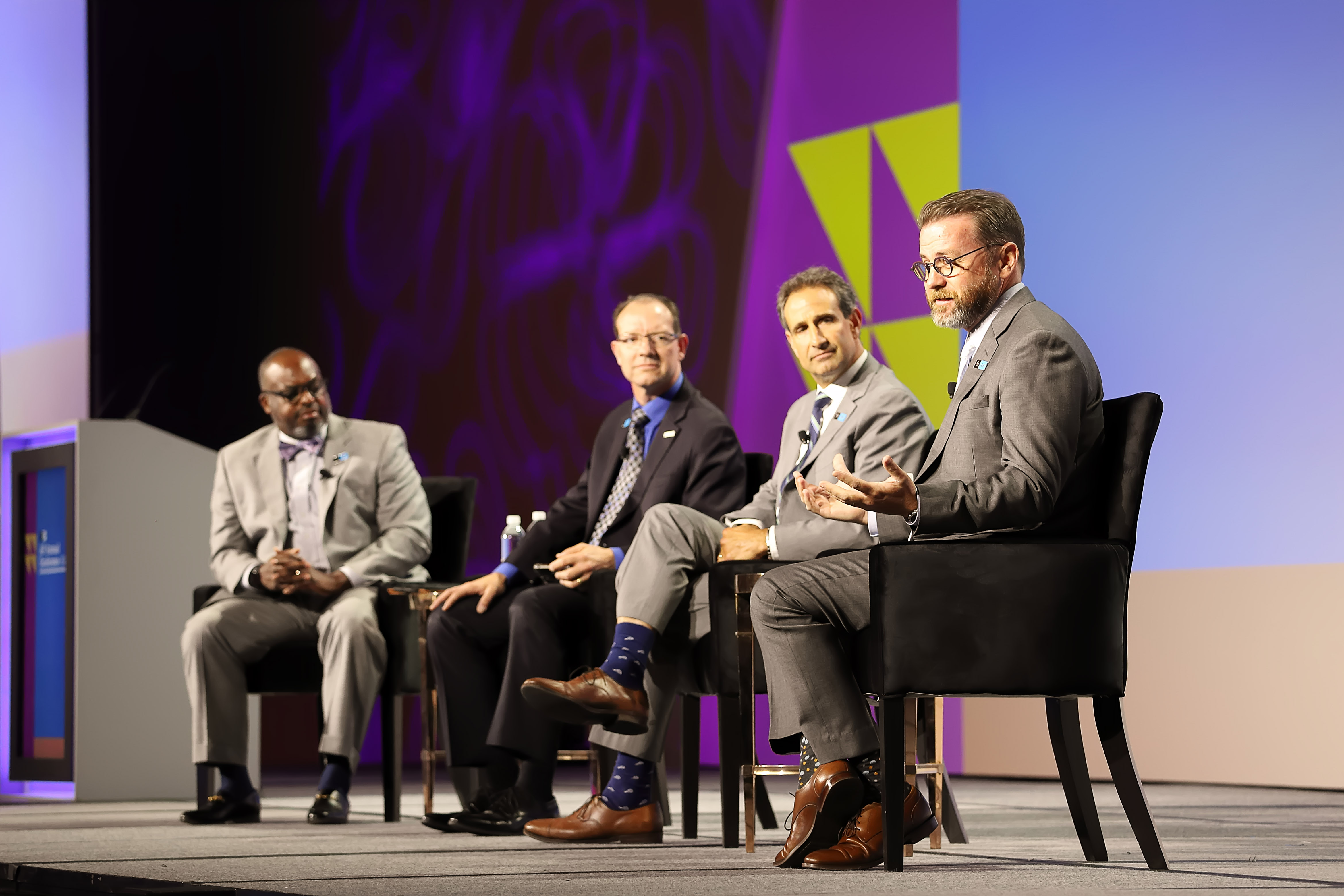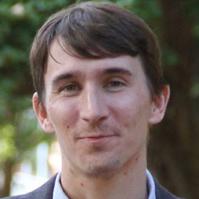AP Annual Conference 2024
AP District of the Year Takes a Whole-Community Commitment
Earning recognition as AP District of the Year takes long-term commitment. At the 2024 AP Annual Conference, the leaders of this year’s three awarded school systems credited yearslong initiatives to shift school cultures, end counterproductive student tracking practices, and win broad community support for a more inclusive AP program.

Bruce Gearing, the superintendent of Leander Independent School District just north of Austin, Texas, talked about the obligation to serve a wide range of students and make sure they’re given high expectations for achievement. “We’re a public school,” he said. “We take whoever you are, however you are, wherever you are. That’s our job every single day … to make sure [students] go back in the afternoon a little better than how they started in the morning.”
A belief in the innate potential of every student must be baked into the district’s culture, Gearing said, to create meaningful opportunity at every level.
This year’s AP District of the Year Awards recognize exactly that kind of determined optimism, honoring school systems that have shown great progress in expanding their AP programs to be more representative of their student populations. Historically, lower-income and minority students have been less likely to take advantage of AP courses. All of the districts recognized this year have taken focused action to close those gaps in participation.
That’s our job every single day … to make sure [students] go back in the afternoon a little better than how they started in the morning.
Bruce Gearing, Superintendent, Leander Independent School District
“We had a real challenge in Los Alamos with gatekeeping,” explained J. Carter Payne, assistant superintendent for teaching and learning for Los Alamos Public Schools. “We had to break that down. That started in elementary [school], all the way into middle school, making sure all kids had the opportunity to take challenging classes at those levels.”
All three district leaders emphasized the need for broad community buy-in. Shifting an AP program to welcome a wider range of students can require changes that reach well beyond high school into lower grades, examining the barriers that keep students from pursuing accelerated academic tracks early in their careers. Rethinking those early prerequisites can help more students get on pace for AP coursework by the time they reach high school.
Shifting a whole district’s approach means garnering support from parents, school board members, school leaders, and teachers at every level. Payne spoke about some of the uncomfortable conversations that came with opening up a small AP program to a larger cohort of students and overcoming the initial resistance to those changes.
“You have to be able to make some hard decisions,” he said, and that’s especially true in a smaller district with more limited resources. “You can’t do everything all at once for everyone at the same time. And it’s hard to have those conversations, but it’s important for the overall health of the program.”
Scott Bersin, assistant superintendent for curriculum and instruction in the Bellmore-Merrick Central High School district on Long Island, credited steady support from his school board. District leaders were willing to lead many of those challenging community conversations and advocate for greater support to get students on track for AP. Raising the percentage of students with AP experience became a shared goal for the entire district, which made it easier to push for needed changes. “We challenged the entire district to grow that number,” Bersin said. “It started in the middle schools and worked its way up to high schools.”
In Gearing’s district, there’s an entire administrative office dedicated to analyzing student data and identifying the hurdles that keep students out of advanced courses. That top-level focus has made it easier to see some of the unexpected ways that district policies or school practices kept students from pursuing more challenging courses, Gearing said.
“We’re constantly identifying the barriers and then systemically eliminating the barriers to access and success,” he claimed. “We want to encourage students to understand they can achieve way more than they think they can.”
All three leaders praised the AP Program’s professional development for helping to foster a sense of community among teachers, AP coordinators, and district leaders. Payne said that AP Summer Institutes are the highest-quality professional development he’s ever experienced for teachers, and all three men agreed that bringing district leaders to APAC helped keep everyone energized about improving AP performance.
“It’s so good for building community,” Payne stated. “The sense of community among staff in our schools is one of the great factors that leads our students to success.”
